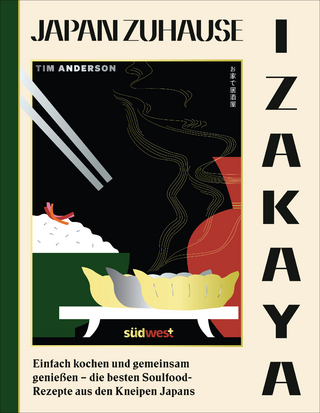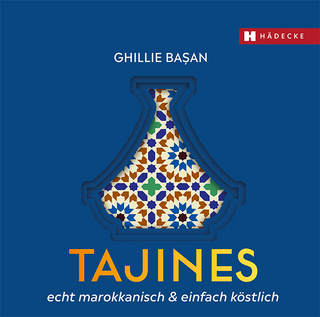
Jewish Cuisine in Hungary
Central European University Press (Verlag)
978-963-386-273-5 (ISBN)
Andras Koerner refuses to accept that the world of pre-Shoah Hungarian Jewry and its cuisine should disappear almost without a trace and feels compelled to reconstruct its culinary culture.
Winner of the 2019 National Jewish Book Award in the category of Food Writing & Cookbooks
Andras Koerner refuses to accept that the world of pre-Shoah Hungarian Jewry and its cuisine should disappear almost without a trace and feels compelled to reconstruct its culinary culture. His book-with a preface by Barbara Kirshenblatt-Gimblett-presents eating habits not as isolated things, divorced from their social and religious contexts, but as an organic part of a way of life.
According to Kirshenblatt-Gimblett: "While cookbooks abound, there is no other study that can compare with this book. It is simply the most comprehensive account of a Jewish food culture to date." Indeed, no comparable study exists about the Jewish cuisine of any country, or, for that matter, about Hungarian cuisine. It describes the extraordinary diversity that characterized the world of Hungarian Jews, in which what could or could not be eaten was determined not only by absolute rules, but also by dietary traditions of particular religious movements or particular communities.
Ten chapters cover the culinary traditions and eating habits of Hungarian Jewry up to the 1940s, ranging from kashrut (the system of keeping the kitchen kosher) through the history of cookbooks, and some typical dishes. Although this book is primarily a cultural history and not a cookbook, it includes 83 recipes, as well as nearly 200 fascinating pictures of daily life and documents.
Andras Koerner was born in 1940 in Budapest. After receiving his degree in architecture he worked for several years as an architect. In 1967, he moved to the United States Since where he continued the same career. Since his retirement, he dedicates his time mostly to writing and organizing exhibitions.
Contents
Introduction
1.The Kashrut
The Ritual Slaughter of Animals
The Kashering of Meat at Home
Separating Dairy and Meat Dishes
Pareve (Neither Meat, nor Dairy) Dishes and Ingredients
Kosher Wine
Kosher Milk and Dairy Products
Giving Up the Kashrut Rules
Christian Views of the Kashrut
2.The Ashkenazi Jewish Kitchen
Ashkenazi and Sephardi Jewry
A Short History of the Ashkenazi Kitchen
3.The Hungarian Jewish Kitchen
17th-Century Sephardi Influence
19th-Century Gastronomic Writers
Handwritten Recipe Collections
19th-Century Cookbooks
19th-Century Pioneers of Jewish Ethnography
Turn-of-the-Century Recipe Competition
Food and Increasing Secularization
Cookbooks in the First Half of the 20th Century
Post-1945 Cookbooks about Prewar Cooking
Some Characteristics of the Hungarian Jewish Kitchen
Food and Hungarian Jewish Identity
Hungarian Influence in the Jewish Kitchen of Other Countries
4.Regional and Cultural Differences
The Northeastern Regions and the Galician/Polish/Ukrainian Influence
Western Hungary and the Austrian/German Influence
The Northwestern Regions and the Bohemian/Moravian/Slovakian Influence
The Southern Regions and the Serbian/Croatian Influence
Transylvania and the Romanian Influence
5.Weekdays and Holidays
Dishes of the Weekdays
Shabbat Dishes
Dishes for the Holiday of the New Moon
Dishes of Rosh Hashanah
Yom Kippur - Dishes Before and After the Fast
Dishes of Sukkot
Dishes of Simchat Torah
Dishes of Hanukkah
Purim Dishes
Dishes for Pesach
Shavuot Dishes
Dishes for the Dairy Days and for the End of the Tisha B'av Fasting
Dishes for the Birth of a Boy
Cakes for the First Day of Cheder
Cakes to Celebrate a Boy's Exam in a Cheder
Dishes for Bar Mitzvah
Dishes for Engagement and Wedding
Dishes for Mourning Ceremonies
6.Households
Rural and Small-Town Households
Keeping Geese
Urban Households
Canning
Maids
The Role of Cooking in the Lives of Jewish Women
Kitchen Furniture and Equipment
Dishes, Tableware, and Tablecloths
Ritual Plates, Cups, and Table-Linen
7.Domestic Hospitality and Banquets
Dinner- and Supper-Guests, Home-Parties, Salons
Banquets, Celebratory Meals
Rules of Good Manners at Meals
8.Jewish Places of Hospitality
Kosher Restaurants and Boarding Houses
Coffeehouses, Coffee Shops, and Pastry Shops
Jewish Soup-Kitchens
9.Food Industry and Trade
Kosher Food Factories
Kosher-Wine Producers and Merchants
Food Shops and Street Vendors
Food Markets
10.Characteristic Dishes
Challah
Gefilte Fish
Boiled Beef
Chopped Eggs
Cholent
Bread Kugel
Ganef
Stuffed Goose Neck
Tzimmes
Goose Giblets with Rice Pilaf
Walnut Fish
Flodni
Kindli
Hamantasche
Matzo Balls
Chremsel
Epilogue
Appendix
1.Jewish Cookbooks Published in Hungary Before 1945 - A Bibliography
2.Authors of the Handwritten Recipe Collections Used in My Work
3.List of Quoted Recipes
Acknowledgements
Selected Bibliography
Sources of Pictures
Index of Names
| Erscheinungsdatum | 10.05.2021 |
|---|---|
| Zusatzinfo | lots of photos and authentic recepies |
| Verlagsort | NY |
| Sprache | englisch |
| Themenwelt | Sachbuch/Ratgeber ► Essen / Trinken ► Länderküchen |
| Sozialwissenschaften ► Soziologie ► Spezielle Soziologien | |
| ISBN-10 | 963-386-273-6 / 9633862736 |
| ISBN-13 | 978-963-386-273-5 / 9789633862735 |
| Zustand | Neuware |
| Haben Sie eine Frage zum Produkt? |
aus dem Bereich


